Going to Korea’s Jeju Island? You’ll be astounded by the wealth of museums, parks, and historical sites on the island, all within a half-day’s driving distance of each other. In terms of museums alone, Jeju’s offerings constitute the largest concentration of outstanding museums that we here at WoWasis have seen in Asia, and many of them are outdoors.
You can always take a tour, but we actually recommend renting a car and driving Jeju, well-signed in English, with good roads and excellent island drivers. Be sure you get a good Korean-English GPS from your rental agency.
Have fun in Jeju! Here are our Top 10 picks, divided by West and East:
Western Jeju:
Jeju Love Land
20 km south of the city of Jeju-si
Open daily, 9 am – midnight (must be 18 or over)
www.jejuloveland.com
Tel: +82 (64) 712-6988
Here at WoWasis, we’d guess that the number of museums we’ve visited in our lifetimes to certainly number in the hundreds, and maybe even the thousands. But none of them were as fun as South Korea’s Jeju Love Land, located a few kms south of the city of Jeju-si, on the island of Jeju. Yes, the museum is about sex, and it’s ribald. Nothing in this museum is taken seriously, from the déclassé sex toys in the museum shop (our favorite was a pen holder in which, when a pen is inserted into a couching man’s behind, he moans in pain, a favorite with the Japanese tourists who were visiting that day). The museum is clearly about sex as fun and sex as funny. There’s nothing sacred or politically correct here. But what surprised us was that much of the sculpture an art works are pretty damn good.
Jeju Museum of Art
20 km south of the city of Jeju-si
http://jmoa.jeju.go.kr/index.php/contents/information/viewing/openhours/kor
Tel: +82 (64) 710-4300
Right next door to Jeju Loveland is Jeju’s wonderful Museum of Art, located in a architecturally arresting building. The exhibits are compelling, the staff friendly, the museum relatively uncrowded. Two or three hours would be enough to see both Jeju Loveland and the Jeju Museum of Art, and they’re literally a 30 second walk from each other. Here’s a wonderful rule we found on the JMOA website: “Spectator banned: Person who has possession of the goods the risk of fire, odors, or digusting.” No stinkers allowed, and we’re certainly in favor of that!
Spirited Garden
1534 Jeoji-ri, Hankyeong-myeon
Jeju-si, Jeju 690-947
Tel: (064) 772-3701
open 8:30 – sunset
www.spiritedgarden.com (includes a map)
In 1992, Mr. Sung Bum-young began creating this garden of bonsai trees out of a wasteland. Sung was a farmer who had a vision of what he considered beauty, and who managed, through hard work and determination, to bring it to fruition. He calls it the Bunjae Artpia, and through terraces, walkways, sunken vistas, he displays hundreds of meticulously bonsaied trees. There’s a tremendous amount of documentation throughout the park, both botanical and philosophical. But it’s well worth it, on several levels. It’s beautiful, for one. If you don’t know anything about bonsai, it’s educational (that’s two). But perhaps more importantly, it gives the visitor a reflection point. All of us are capable of having a passion that runs so deeply that we want to share it with the world. It’s not so easy to share, on such a grand level. But Mr. Sung did it, and his remarkable vision resulted in this, one of the highlights of Korea.
Hallim Park
300 Hallim Road, Hallim, Jeju
Tel: (064) 796-0001
www.hallimpark.co.kr
Like the Spirited Garden, Hallim Park represents the vision of one man, Song Bong-kyu, who acquired 80 acres of land and developed a recreational park on it. Unlike the Spirited Garden, it’s neither quiet nor philosophical in nature. What it is, is a microcosm of many of Jeju’s most interesting features, encompassing nine zoned theme parks: Palm Tree Avenue, Wild Grass & Flower Garden, Hyeopjae & Ssangyong Caves, Jeju Stone & Bonsai Garden, Jae-Am Folk Village, Bird Garden, Jae-Am Stone Exhibition Hall, Water Garden, and Subtropical Botanic Garden. It can be seen in just under two hours by taking a walking loop through the park. For us, the most interesting element to the park is its layout and development. We found the trinket shops and restaurants to feel somewhat out of place, but overall, came away feeling gratified that we experienced what was essentially a feat of creativity, built around the remarkable natural caves of Hyeopjae & Ssangyong, 500 meters of which are open to the public, well-lit and easy to navigate, with a number of fascinating features. If you don’t make it to Manjanggul Cave in Eastern Jeju, this is the one to see.
Jeju Art Park, 20 km west of Seoguipo City near the southern coast road, and 40 km south of Jeju City
Tel: (064) 794-9680
The Art Park has more than 160 art works by Korean sculptors, laid out over a large 430,000 square meter surface. The trail system is sophisticated yet easy to navigate, and the plethora of different styles means that the visitor will be exposed to visually stimulating views at virtually every turn.
Hallasan National Park
Tel: (064) 713-9953 (visitor center)
http://www.hallasan.go.kr/english/
At 1950 meters, Hallasan is the highest peak in Korea, and divides the island of Jeju in half. There are a number of trails, two of which reach the crater lake summit. These two take approximately 5 hours to reach the summit. There are emergency shelters along the way, as weather may turn at any moment. Crater hikes are recommended for experienced hikers. Visit the website for more details.
Eastern Jeju:
Jeju Folk Village
631-34, Minsokhaean-ro
Pyoseon, Jeju-Do
Tel: (064) 787-4501
There are a number of folk villages in Korea that feature authentic houses and varied cultural experiences. Some are actual working villages, others are recreated for the purpose of providing a historical perspective. Jeju Folk Village falls into the latter category. We here at WoWasis visited both classes of folk villages, but we felt a bit uncomfortable peering into people’s yards and homes in authentic villages, even though we were welcome to do it. On the other hand, recreated villages seemed a bit artificial at first, although relating to them as working museums eventually made the most sense.
Jeju Folk Village, located near the town of Pyoseon in southeastern Jeju, recreates 19th century Jeju life, and offers a fascinating view of the diversity of villages and lifestyles of the era. There are a total of 117 houses and facilities over 40 acres, including a Mountain Village, Hill-Country Village, Fishing Village, and Shamanism Village. Craftspeople recreate past working endeavors, and the extensive range of folk items on display includes 1,627 woodenware, 1,046 bamboo ware, 1,699 earthenware, 1,544 porcelain ware, and 921 ironware items.
Haenyo Museum
Near Sehwa, Jeju
Tel: (064) 782-9898
www.haenyeo.go.kr
Jeju’s female haenyeo divers utilize llittle more than a mask and a wetsuit, ply local waters in search of edible sea life. They learned their craft from their mothers and grandmothers, but no young girl today aspires to be a haenyeo diver. Today’s youngest divers are in their late 40s, and no one will take their places. From roughly 30,000 of them 50 years ago, today their number is estimated to be fewer than 3,000. A few km northwest of Ilchulbong,you’ll find the Haenyeo Museum, dedicated to the story of these divers, a “can’t miss.”
Manjanggul Cave
Tel: (064) 710-7907
open daily 9 am – 6 pm
http://jejuwnh.jeju.go.kr/contents/english.php?mid=020202
Walking through a lava tube, one can easily imagine being inside of the intestines of an enormous beast made of rock, with the advantages including that the beast is dead, and there’s no smell. Lava tubes are formed when hot rivers of lava surge through a channel, then depart, leaving an enormous empty tube, scoured on the sides by molten detritus, and with various rocky deposits left behind on the floor. You can’t find them everywhere in the world, but there’s a spectacular one on Jeju that’s 7,416 meters long, well lit and marked, and one km of which is open to the public. This enormous section of the cave reaches 30 meters high, and is 23 meters wide at its widest. It’s a UNESCO World Heritage site and features geological formations such as lava flowlines, stalactites, shelves, toes, and columns. This is a Jeju site not to miss, but bring a jacket and good shoes.
Seongsang Ilchulbong and Hanyeo Divers exhibition
Eastern tip of Jeju
Climbing the mountain-crater of Ilchulbong is something that just about every visitor to Jeju does. The climb is a relatively easy 20 minute walk, and provides a view of nearby U-do island. What many visitors miss is the wonderful hanyeo divers’ exhibition at Hanyeo House, just east of Ilchulbong in the adjacent cove. Hanyeo divers may not be around in a few years, so see them now, while you can.
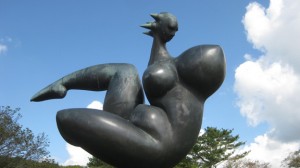
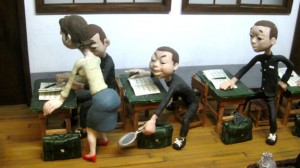
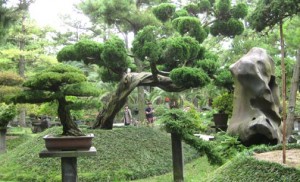
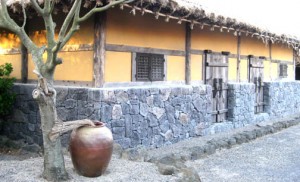
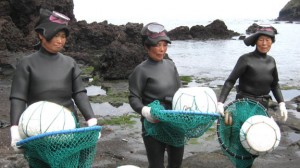
This gives individuals who’re searching for a certain solitude whether, for romantic purposes or wild vacation, an opportunity to enjoy the peace and tranquility they may be short.
Nice. Thanks for writing that. I will definitely come here to read more and inform my friends about this site.